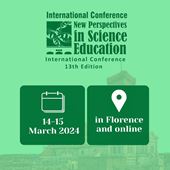Impact and Importance of Teaching Nuclear Processes, History, and Contemporary Issues in the Middle Grades
Peter N. Knutson, Dubuque Community Schools (United States)
Abstract
Out of the scientific discoveries of the 20th Century, the harnessing of the power of the atom stands above all else in its impact on our world. Despite its global impact, nuclear processes are all but ignored in the middle grades, even though it is well within their cognitive abilities. The world’s use of this technology provides rife opportunities for students to explore the impact of science on the global stage, politics, energy, environment, and humanity (in both its personal and existential forms). I have expanded what most teachers utilize 2-3 days for into a month-long unit, that focuses not only on the scientific processes themselves, but also the impact. We go deeply into all components of the science behind these processes. Students become extremely confident in their intelligence when they utilize equations to represent nuclear decay and Einstein’s E = mc2. Beyond the science we delve into the impact on ALL realms of nuclear weapons and geopolitics of the 20th Century and the social mindset they caused, nuclear contamination from testing, industry, and nuclear power. This provides ample discussion points for students to explore, with debate frequently utilized in class. This year my honors class Skyped with a nuclear history expert, where they each developed highly cognitive and thoughtful questions. The confidence and academic strength gained by these students was large. Beyond the Cold War we also focus on contemporary nuclear issues including current Trump/Putin nuclear comments and North Korea’s nuclear program and claims. Regarding North Korea, my students evaluated multiple claims made by Kim Jong Un, and developed and argumentative responses to these claims, which they sent to experts, who returned accolades for their accuracy of work and depth of analysis, including William J. Perry, The Stanford Center, and the National Nuclear Security Agency. After this unit, students have an expanded mindset to the impact of this science and have gained confidence in their own scientific competencies and analytical abilities. The presentation will focus on these approaches, outcomes from this unit, and the argument that nuclear issues must play a larger role in middle grade science curricula.
References:
 New Perspectives in Science Education
New Perspectives in Science Education


























